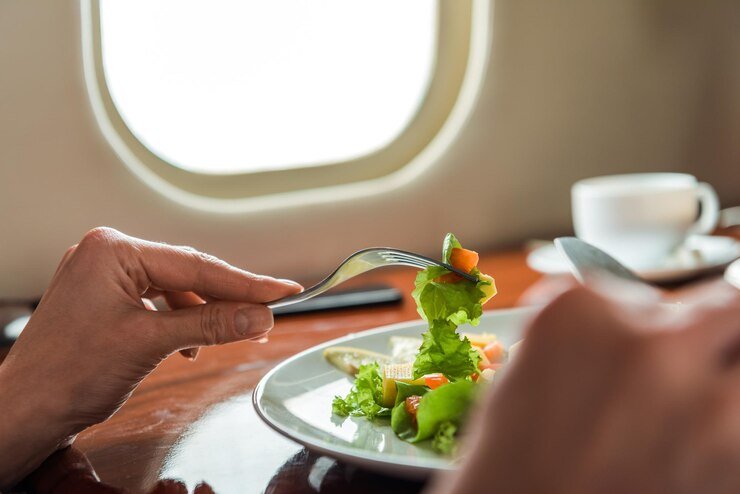How to Travel Smart When You Have Food Sensitivities

Travel is one of life’s great joys—but for those with FODMAP sensitivities or other digestive issues, the idea of leaving home can also come with a dose of anxiety. New foods, unpredictable meal options, and long stretches without access to safe snacks can all spell trouble for a sensitive gut. But the good news is that with a bit of preparation, you can enjoy your trip without sacrificing your comfort—or your stomach. From planning meals to packing digestion aids, here’s how to stay symptom-free while seeing the world.
Understand Your Triggers Before You Go
First things first: know your body. The low FODMAP diet is a fantastic tool for identifying which types of fermentable carbs cause your symptoms, but even within the FODMAP world, everyone’s sensitivity is a little different. Before you book your ticket, take stock of your personal no-go list. Are onions your nemesis? Does lactose set you off? Knowing your individual triggers will help you make smart food choices once you’re on the road.
It’s also helpful to think about how your gut typically reacts to stress, lack of sleep, or irregular eating. Travel can throw off routines, so the more you anticipate, the better you can manage.
Research the Local Cuisine
One of the best parts of travel is the food—but it can also be one of the biggest challenges for someone with food sensitivities. Spend some time researching local cuisine before your trip. What are the staple ingredients in the region? Are onion and garlic used in everything? Is it a dairy-heavy culture?
Once you know what to expect, you can come up with a loose game plan. For example, in places where gluten or dairy is prominent, you can make a list of restaurants with allergy-friendly menus or look for vegetarian or vegan spots that may cater more readily to restricted diets.
And remember: it’s OK to get excited about the food even if you can’t eat everything. With a little extra effort, you can still indulge and explore local flavors—just in a way that keeps your body happy too.
Book Accommodations With a Kitchen
If possible, look for lodging that includes a small kitchen or kitchenette. Being able to prep your own meals—even if it’s just one per day—can make a huge difference. Not only can you control the ingredients, but you’ll also save money and avoid the stress of trying to find safe food at every meal.
Before your trip, you can even pack a few basic pantry staples like oats, rice cakes, or a small container of olive oil, so you’re not starting from scratch.
Pack Smart: Snacks, Supplements, and Enzymes
When it comes to food sensitivities and travel, the right packing list can be your secret weapon. Here are some essentials to consider:
- Low FODMAP travel snacks: Think protein bars, nuts (in moderation), rice crackers, dried fruit like bananas or strawberries, or single-serve oatmeal packets.
- Shelf-stable meal options: Small, portable items like tuna pouches, instant rice, or microwaveable soups can be lifesavers during layovers or in food deserts.
- Digestive enzymes: These are a game-changer. Whether you’re dealing with lactose intolerance, high-fructose meals, or unexpected garlic in your dinner, digestive enzymes can help reduce symptoms like bloating, gas, or cramping. Look for enzymes specifically formulated for FODMAPs (fodzyme.com/products/fodzyme), or target ones for particular ingredients (e.g., lactase for dairy, alpha-galactosidase for legumes and cruciferous vegetables).
- Medication and probiotics: If you use medications or probiotics to manage your gut health, don’t forget to bring them. Consider packing them in both your carry-on and your checked luggage in case of delays or lost bags.
- Food sensitivity cards: Print or save digital cards in the local language that explain your food restrictions. This is especially useful in restaurants where staff may not be familiar with FODMAPs or food intolerances.
Build Flexibility Into Your Itinerary
Having food sensitivities means you’ll need to pace yourself a little differently than others might. It’s a good idea to allow buffer time between meals and activities in case your body needs a break or you need to find a safe food option.
Don’t plan long excursions without access to restrooms or snacks unless you’re sure your gut is in a good place that day. If your itinerary is packed with back-to-back events, bring extra snacks and hydration, and know where the nearest grocery or pharmacy is in each area.
Keep Your Gut Routine as Normal as Possible
Routine might be the first thing to go when you’re traveling, but it’s also the one thing your gut loves most. Try to maintain a somewhat consistent eating schedule and keep up with your usual sleep, hydration, and movement habits.
If you usually drink warm lemon water in the morning or take probiotics with breakfast, keep doing it. These small rituals can help anchor your digestion even when everything else is new.
Be Gentle With Yourself
Even with the best preparation, slip-ups happen. Maybe you accidentally eat a dish with hidden garlic, or maybe the jet lag hits harder than expected and your digestion slows to a crawl. That’s OK.
The key is to focus on managing symptoms, not punishing yourself. Use your enzymes, take a walk, drink some peppermint tea, and rest when needed. The goal isn’t perfection—it’s finding balance so you can enjoy the experience without letting your food sensitivities take center stage.
Final Thoughts
Traveling with FODMAP and food sensitivities requires more forethought, but it doesn’t have to mean missing out. With research, smart packing, and tools like digestive enzymes in your kit, you can explore confidently and comfortably. You know your body best—trust your preparation, listen to your gut, and go enjoy the adventure.






